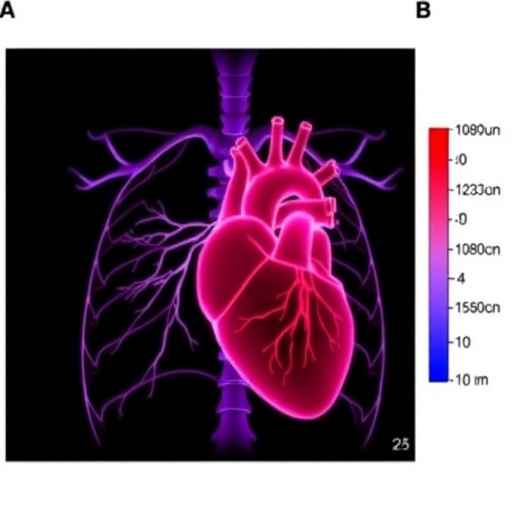
In a groundbreaking advancement poised to redefine postoperative care, researchers have unveiled compelling evidence highlighting the efficacy of levosimendan in treating subclinical heart failure following noncardiac surgery. This landmark phase III randomized, double-blinded clinical trial, spearheaded by Reiterer, Kabon, Taschner, and their colleagues, introduces a novel pharmacological strategy targeting a frequently overlooked but clinically significant postoperative complication. Subclinical heart failure (SHF), often synonymous with subtle cardiac dysfunction undetectable by routine diagnostics, presents a silent yet profound risk to patient recovery trajectories after noncardiac surgical interventions. The emerging data, published in Nature Communications, not only illuminates the potential of levosimendan as a therapeutic agent but also unravels intricate physiological underpinnings of postoperative myocardial stress responses.
The clinical phenomenon of postoperative subclinical heart failure has long remained an enigma within perioperative medicine, primarily due to its insidious presentation and diagnostic challenges. Despite the absence of overt symptoms, patients exhibiting SHF endure compromised cardiac output and impaired myocardial contractility, ultimately precipitating adverse outcomes including prolonged hospitalization, increased morbidity, and higher healthcare burdens. Conventional management paradigms often fail to address this latent dysfunction, underscoring a critical gap in perioperative cardiac care. Against this backdrop, levosimendan—an inodilator known for its calcium sensitizing and potassium channel-modulating properties—has garnered attention for its cardioprotective potential in acute heart failure settings. However, its utility in the subtle, postoperative cardiac milieu remained uncharted territory until now.
The study’s methodological rigor is evident in its design: a multicenter, randomized, double-blinded, placebo-controlled trial encompassing a robust patient cohort undergoing diverse noncardiac surgical procedures. Participants identified at risk for SHF were meticulously screened and stratified, ensuring an unbiased assessment of levosimendan’s therapeutic impact. The primary endpoints revolved around quantifiable improvements in myocardial performance indices alongside secondary measures capturing biochemical markers of cardiac stress and functional outcomes. Crucially, this approach bridged the typical disconnect between clinical symptomatology and subclinical myocardial impairment, harnessing advanced imaging modalities and biomarker analyses to elucidate nuanced cardiac dynamics.
.adsslot_ixSJKTFmv9{width:728px !important;height:90px !important;}
@media(max-width:1199px){ .adsslot_ixSJKTFmv9{width:468px !important;height:60px !important;}
}
@media(max-width:767px){ .adsslot_ixSJKTFmv9{width:320px !important;height:50px !important;}
}
ADVERTISEMENT
Levosimendan’s pharmacodynamics underpin its suitability for perioperative cardiac support. By binding selectively to cardiac troponin C in a calcium-dependent manner, levosimendan enhances myocardial contractility without significantly increasing intracellular calcium concentrations, thereby circumventing the proarrhythmic risks commonly associated with traditional inotropes. Concurrently, its action on opening ATP-sensitive potassium channels induces vasodilation, optimizing myocardial oxygen supply-demand balance. This dual mechanism makes levosimendan uniquely capable of augmenting cardiac output with minimal energetic cost—paramount during the precarious postoperative phase when cardiovascular resilience is paramount.
The trial’s findings reveal that patients receiving levosimendan exhibited statistically significant enhancements in left ventricular ejection fraction and stroke volume compared to placebo. Moreover, circulating biomarkers indicative of myocardial injury and systemic inflammation, such as troponin I and high-sensitivity C-reactive protein, demonstrated marked attenuation. These biochemical improvements coincided with tangible clinical benefits, including reduced incidence of overt heart failure episodes and shortened intensive care unit stays. Importantly, levosimendan administration was well-tolerated, with a safety profile comparable to control groups, thereby reinforcing its feasibility for widespread perioperative adoption.
Interpreting these results necessitates an appreciation of postoperative cardiac pathophysiology. Surgery-induced systemic inflammation, neurohormonal activation, and fluid shifts collectively impose formidable hemodynamic stress on the myocardium. In patients with suboptimal cardiac reserve, these insults may trigger latent contractile dysfunction manifesting as SHF. The ability of levosimendan to bolster myocardial performance while mitigating inflammatory cascades suggests a multifactorial therapeutic effect, extending beyond pure inotropy. This insight hints at potential avenues for tailored perioperative interventions aimed at enhancing cardiac resilience through metabolic modulation and anti-inflammatory pathways.
The implications for clinical practice are profound. By integrating levosimendan into perioperative protocols, especially for high-risk surgical populations, clinicians could preempt the progression of subclinical myocardial impairment into overt heart failure. This preventive strategy aligns with the broader paradigm shift towards personalized medicine, leveraging patient-specific risk stratification and targeted pharmacotherapy to optimize outcomes. Additionally, the trial’s success underscores the vitality of rigorous clinical research in uncovering overlooked postoperative complications that exert outsized impacts on morbidity and resource utilization.
From a translational perspective, the research offers fertile ground for future investigations. Queries arise regarding optimal dosing regimens, timing of administration relative to surgical insult, and potential synergistic effects when combined with other cardioprotective agents. Furthermore, elucidation of levosimendan’s molecular interactions within the inflamed perioperative myocardium could unlock novel therapeutic targets. Emerging biomarkers might refine patient selection, enabling precision deployment of levosimendan to those poised to derive maximal benefit while minimizing unnecessary exposure.
The trial also provokes reconsideration of perioperative monitoring standards. Conventional diagnostic frameworks relying on symptomatic assessment and basic hemodynamic parameters may underestimate the prevalence and severity of SHF. Adoption of advanced echocardiographic techniques, strain imaging, and serum biomarker panels could enhance early detection, facilitating timely intervention. Such innovations promise to reshape cardiac surveillance paradigms and redefine benchmarks for postoperative recovery quality.
Moreover, levosimendan’s utility could extend beyond the immediate postoperative window. Its influence on myocardial energetics and calcium signaling might confer long-term cardiac remodeling benefits, preserving ventricular function over months or years. Longitudinal studies assessing durability of therapeutic effects and implications for chronic cardiac health are warranted, potentially broadening levosimendan’s role from acute management to sustainable cardioprotection.
Crucial to widespread implementation will be cost-benefit analyses verifying levosimendan’s economic viability. While initial acquisition costs may be notable, reductions in ICU duration, readmission rates, and heart failure complications could yield net healthcare savings. Health economic models integrating clinical efficacy data and resource utilization metrics will inform payer decisions and institutional policies.
In the landscape of evolving perioperative medicine, this phase III trial represents a milestone. It harnesses rigorous scientific methodology to confront a subtle yet impactful clinical challenge, delivering actionable insights with potential global health ramifications. The confluence of innovative pharmacology, precise diagnostics, and patient-centered care exemplifies the future of surgical risk mitigation.
As the medical community digests these findings, collaborative efforts across cardiology, anesthesiology, and surgery disciplines will be paramount. Multidisciplinary pathways incorporating levosimendan could emerge as standard care, supported by consensus guidelines and educational initiatives. This integrated approach could ultimately elevate postoperative outcomes, transforming how clinicians anticipate and manage cardiac complications in surgical populations.
The trial also catalyzes a broader dialogue about subclinical conditions in medicine—those that lurk beneath overt signs yet wield disproportionate influence on patient trajectories. By illuminating SHF and modeling effective intervention, the study offers a template for tackling analogous stealthy disorders across specialties.
In sum, Reiterer and colleagues have delivered a pioneering exploration into levosimendan’s capacity to revive the vulnerable postoperative heart. Their work challenges entrenched assumptions, spotlights an oft-neglected clinical entity, and delivers hope for safer surgical recoveries. As this knowledge permeates practice and further research unfolds, patients worldwide stand to benefit from an era where cardiac weakness after surgery is not merely detected, but decisively treated.
Subject of Research: Levosimendan treatment for postoperative subclinical heart failure after noncardiac surgery
Article Title: Levosimendan for postoperative subclinical heart failure after noncardiac surgery: a randomized, double-blinded, phase III trial
Article References:
Reiterer, C., Kabon, B., Taschner, A. et al. Levosimendan for postoperative subclinical heart failure after noncardiac surgery: a randomized, double-blinded, phase III trial. Nat Commun 16, 5847 (2025). https://doi.org/10.1038/s41467-025-60601-y
Image Credits: AI Generated
Tags: addressing latent cardiac dysfunctioncalcium sensitizers in heart treatmentimproving patient recovery after surgerylevosimendan for postoperative heart failuremyocardial stress responsesnoncardiac surgery complicationsperioperative medicine advancementsphase III clinical trial findingspostoperative cardiac care innovationssilent cardiac dysfunctionsubclinical heart failure treatmenttherapeutic agents for heart failure





